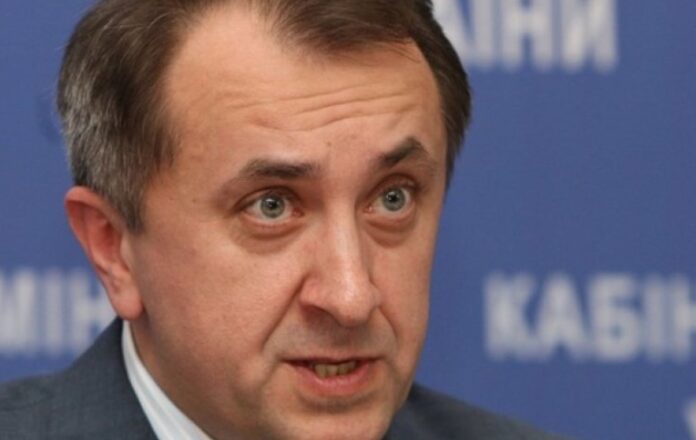According to the results of another survey of enterprises of Ukraine conducted by the National Bank, the index of expectations of business activity in October fell below the equilibrium level (to 49.6 compared to 50.1 in September). The main factors influencing the deterioration of business expectations were the preservation of significant security risks, the destruction of production capacities of individual enterprises, logistical restrictions of exporters, the narrowing of investment demand, the resumption of fuel price growth, as well as a significant shortage of qualified personnel.
In particular, industry respondents do not predict changes in their business activity for the second month in a row (the index remains at the level of 50), but they are positive about the volumes of manufactured products, new orders for products, as well as about stocks of raw materials and materials. Also, as a result of the seasonal reduction in economic activity, construction enterprises generally negatively assessed the results of their activities (the index decreased to 44.8 from 50.6), in particular, due to the expectation of a decrease in the availability of contractor services and an increase in purchase prices. Therefore, managers of construction enterprises predict a reduction in the total number of employees.
Similar results of the survey of industrial enterprises conducted by the State Statistics Service. Thus, in October 2023, the indicator of business confidence in industry decreased by 2.2 percentage points compared to September 2023. and amounted to minus 9.1%, in the processing industry this indicator decreased by 2 percentage points compared to the previous month. and was minus 10.4%. As in September, industrial enterprises noted that they were satisfied with orders, on average for four months of work, and the level of utilization of production facilities was on average 62.9%.
According to the survey of the National Bank in October, enterprises of the service sector negatively evaluated the results of their activities due to the further increase in the price of fuel, problems with logistics and weak demand (the index was 47.2 compared to 47.9 in September). The respondents of this sector maintained negative expectations regarding the volume of new orders, the volume of services in the process of execution, and also, unlike the previous month, expect a decrease in the volume of services provided.
Instead, trade enterprises remain the most optimistic among other FEZs about their performance thanks to stable domestic demand, slowing inflation and sufficient supply of goods. An increase in turnover and volume of purchases of goods for sale is expected. However, even in this segment, enterprises are pessimistic about the total number of employees.
As of the beginning of November, more than 67 million tons of new crops were threshed in Ukraine, in particular, grain crops - 47 million 184.1 thousand tons, oil crops - 19,958 thousand tons. Harvesting of grain and leguminous crops was carried out on an area of 9.3 million hectares with a yield of 50.6 tons/ha, in particular, 4,694.5 thousand hectares of wheat were threshed (yield - 47.7 tons/ha), 22.4 million tons were threshed; corn - 4.4 million tons; corn - 4.5 thousand tons; corn - 4.5 thousand tons. tons; 2,420.1 thousand hectares of corn were threshed (yield - 70.8 tons/ha), 17.1 million tons were threshed; 1,504.5 thousand ha of barley were threshed (yield – 39.2 tons/ha), 5.9 million tons were threshed. At the same time, according to the results of the State Statistics Service, agricultural enterprises noted a slowdown in the growth rate of production volumes. A decrease in prices for agricultural products and insufficient demand were noted as factors weighing on production.
The reduction of security risks for business should be facilitated by the EBRD's implementation of the pilot project of insurance against military risks in Ukraine, to which Great Britain recently joined. The relevant statement of intent was signed between the Government of Great Britain and the EBRD on October 31, 2023. The EBRD project provides for the creation of a new fund that promotes the development of the international market of reinsurance and insurance of property and trade risks, including insurance of goods in transit or in warehouses.
Budget sphere
According to operational information of the Ministry of Finance, for January-October 2023, the general fund of the state budget received UAH 1,414.3 billion. Among the payments, the execution of which is controlled by the tax and customs authorities, the following main revenues were received: UAH 299.7 billion - value added tax on goods imported into the customs territory of Ukraine; UAH 169.3 billion - value added tax on goods produced in Ukraine, of which UAH 280.8 billion was collected, UAH 111.6 billion was reimbursed; UAH 140.0 billion – personal income tax and military duty; UAH 108.7 billion – corporate income tax; UAH 88.1 billion – excise tax; UAH 48.5 billion – rent payment for the use of subsoil; UAH 25.4 billion - import and export duties. At the same time, the State Tax Service performed 102.6% (+14.8 billion UAH), the State Customs Service - 97.3% (-9.0 billion UAH).
The next important source of state budget revenues in January-October of this year was the funds received by Ukraine in the form of international aid (grants) - UAH 404.9 billion. The largest donor of grant support in January-October 2023 was the USA (398.5 billion UAH). Also, on a non-refundable basis, Ukraine received financing from Germany, Spain, Finland, Ireland, Switzerland, Belgium, Iceland in the total amount of up to 6.4 billion hryvnias. The funds were sent to the state budget of Ukraine through the Trust Fund of the World Bank as part of the PEACE in Ukraine project.
In general, according to the results of January-October 2023, the general and special funds of the state budget received UAH 2,206.0 billion in taxes, fees and other payments. At the same time, cash expenditures of the state budget for January-October 2023 amounted to UAH 3,113.9 billion, including the general fund – UAH 2,346.0 billion, or 95.1% of the total of the reporting period. As a result, for ten months of 2023, the state budget was implemented with a deficit in the amount of UAH 900.0 billion, including the general fund - in the amount of UAH 923.1 billion, against the planned deficit of the general fund for January-October 2023 in the amount of 1,478.0 billion hryvnias.
Actual state borrowings in the general fund of the state budget for January - October 2023 amounted to UAH 1,341.4 billion, or 86.3% of those planned for this period. UAH 452.0 billion was attracted from the placement of OVHZ for financing the state budget, including UAH 141.5 billion in foreign currency. (US$3,098.3 million and EUR 709.3 million). UAH 889.4 billion came from external sources. (or $24.3 billion).
Raised funds from the placed OVHZ for January - October 2023 made it possible to fully cover the need for funds necessary to make payments for repayment of the OVHZ. In general, payments for repayment of the state debt for January - October 2023 amounted to UAH 383.0 billion (97.5% of the plan), maintenance payments - UAH 187.5 billion (100.0% of the plan).
Foreign exchange market
Moderate growth of both demand and supply of foreign currency on the interbank market by bank clients last week led to the preservation of net demand for foreign currency. The corresponding deficit was covered by the interventions of the National Bank, the net value of which last week amounted to 563 million US dollars (compared to 675 million dollars a week earlier). The hryvnia interbank exchange rate strengthened by almost 1.0% over the week.
At the same time, the deficit of the current account, which for 9 months of 2023 amounted to 5.5 billion US dollars (compared to a surplus of 7.9 billion US dollars for the same period in 2022), continued to act as a dominant factor in the demand for foreign currency . Thus, the negative balance of foreign trade in goods and services for January-September reached 28 billion US dollars (including a "minus" of 3.6 billion US dollars in September). At the same time, the traditional channels of receipts of foreign currency on the current account are gradually decreasing: receipts to Ukraine for wages for 9 months. 2023 amounted to 9.1 billion US dollars (9 months of 2022 - 9.6 billion US dollars), transfers (mainly to the general government sector) amounted to 18.6 billion US dollars (9 months of 2022 - 20.3 billion US dollars).
Inflows of direct foreign investments to Ukraine in September amounted to 126 million US dollars (3.2 billion US dollars since the beginning of the year) and were largely provided by the reinvested income of foreign investors (78 million US dollars in June, 2.4 billion US dollars USA since the beginning of the year). ). The volume of portfolio investments in Ukraine for 9 months. 2023 decreased by 331 US dollars, which primarily reflected a decrease in investments by foreign investors in government debt securities, as well as banks and the corporate sector. The growth of the volume of cash currency outside banks accelerated to 775 million US dollars in September (8.1 billion US dollars for January-September 2023).
Financial sector
According to the National Bank, indicators of capital adequacy of the banking system of Ukraine continue to remain high. As of October 1, 2023, the adequacy of the regulatory capital of Ukrainian banks was 25%, the core capital was 14.8%, which is more than twice the minimum regulatory requirements of the National Bank. Positive financial results of banks contribute to the preservation of high capitalization - in 8 months of 2023, the net profit of the banking system exceeded 95 billion hryvnias (return on capital - 64.7%).
The amount of liquidity in the banking sector (in the form of balances on current accounts and NBU certificates of deposit) remains at the level of about UAH 680 billion, including about UAH 480 billion in NBU certificates of deposit. The main factor in maintaining a high level of bank liquidity continues to be expenditures on the Government's Unified Treasury Account, while interventions by the National Bank to sell foreign currency reduce the amount of free liquidity in the banking system. Excess liquidity causes low demand from banks for refinancing loans, the balance of debt for which has decreased to less than 2.5 billion hryvnias, and the maintenance of market rates at the level of the lower limit of rates for NBU operations (as of 15.09.23 it is 16%).
Under the terms of the "Affordable Loans 5-7-9%" program last week, banks issued 589 soft loans for a total of UAH 2.4 billion, of which about half were issued by state banks. The total number of loans issued since the beginning of large-scale military operations on the territory of Ukraine under the program exceeded 40,500 for a total of 158 billion hryvnias. Given the priority of wartime goals, the lion's share of loans were issued by banks in support of agricultural production and anti-war goals.


